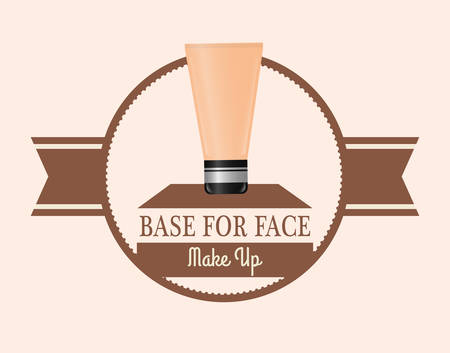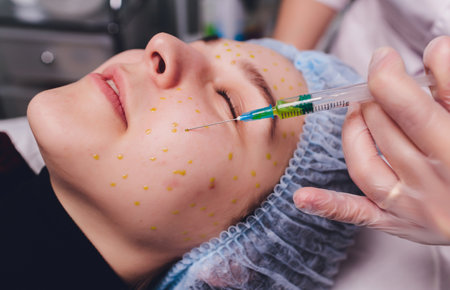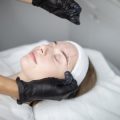Introduction to Laser Hair Removal in the UK
Laser hair removal has become an increasingly popular aesthetic treatment across the United Kingdom, offering a long-lasting solution for unwanted hair on various areas of the body. As more people seek alternatives to traditional methods such as shaving, waxing, or epilation, laser technology stands out for its efficiency and potential to deliver smoother skin with fewer maintenance requirements. This surge in demand is evident not only in major cities like London and Manchester but also throughout smaller towns and rural communities, reflecting the widespread appeal of this procedure among individuals of all ages and backgrounds.
However, as the UKs population becomes ever more diverse, there is a growing recognition of the need for safe and effective laser hair removal practices that address the unique characteristics of different skin types. Traditional approaches were often developed with lighter skin tones in mind, which can pose significant risks—such as hyperpigmentation, burns, or scarring—when applied indiscriminately to darker skin tones or those with higher melanin content. Therefore, tailored guidelines are essential to ensure optimal results and safety for everyone seeking treatment. This article aims to provide comprehensive recommendations for practitioners and clients alike, helping to foster a safer environment for laser hair removal across the spectrum of skin types found in the UK.
Understanding Skin Types and Fitzpatrick Classification
Laser hair removal is a popular aesthetic treatment across the UK, but its safety and effectiveness are closely linked to understanding the diversity of skin types present in British society. The Fitzpatrick scale is an essential tool in this context, as it classifies skin types based on their response to ultraviolet (UV) light exposure. Developed by Dr. Thomas Fitzpatrick in 1975, this classification assists practitioners in predicting how different skin types will react to laser treatments, which is critical for minimising risks such as burns, hyperpigmentation, or ineffective results.
The Fitzpatrick Skin Type Scale Explained
The Fitzpatrick scale categorises skin into six distinct types, ranging from very fair (Type I) to deeply pigmented dark brown or black (Type VI). Each type indicates varying levels of melanin content and the skins propensity to tan or burn when exposed to sunlight. This information allows clinicians to tailor laser parameters—such as wavelength and energy intensity—for optimal results and safety.
| Fitzpatrick Type | Description | Typical British Demographics | Response to Sun Exposure |
|---|---|---|---|
| Type I | Very fair; always burns, never tans | Northern Irish, Scottish descent | Extremely sensitive; high burn risk |
| Type II | Fair; usually burns, tans minimally | English/Welsh with light complexions | Sensitive; moderate burn risk |
| Type III | Medium; sometimes mild burn, tans uniformly | Mediterranean/European backgrounds | Moderate sensitivity; can tan gradually |
| Type IV | Olive/light brown; rarely burns, tans easily | Mixed heritage/South Asian origins in the UK | Mild sensitivity; tans well |
| Type V | Brown; very rarely burns, tans profusely | African-Caribbean/Indian subcontinent populations in Britain | Low sensitivity; robust tanning response |
| Type VI | Dark brown or black; never burns, deeply pigmented | African/Afro-Caribbean British communities | Very low sensitivity; maximum protection from UV burns |
The Relevance of Fitzpatrick Classification in the UK Context
The UK’s multicultural population encompasses all Fitzpatrick skin types, making it imperative for practitioners to have a nuanced understanding of this classification. Misjudging a client’s skin type can lead to inappropriate laser settings, increasing the likelihood of adverse outcomes. For example, higher melanin levels in Types IV–VI absorb more laser energy, necessitating lower fluence settings and specific wavelengths that bypass epidermal melanin while effectively targeting hair follicles.
The Importance of Accurate Skin Assessment for Laser Hair Removal Safety
An accurate Fitzpatrick assessment should be a standard part of every initial consultation. Beyond visual inspection, practitioners should ask about natural hair colour, eye colour, history of sunburns or tanning habits, and ethnic background. This comprehensive approach ensures both efficacy and safety for all clients seeking laser hair removal in the UK’s diverse demographic landscape.
Key Takeaway:
Recognising and respecting individual differences through proper Fitzpatrick classification is not only best practice but also fundamental to delivering safe laser hair removal across Britain’s varied skin types.

3. Risks and Considerations for Diverse Skin Tones
Laser hair removal is widely recognised as a safe and effective treatment when performed correctly, yet the risks can vary considerably depending on an individual’s skin tone and hair type. In the UK’s multicultural society, practitioners must be acutely aware of these differences to ensure optimal safety and results for all patients.
Potential Risks Associated with Laser Hair Removal
The most common risks include hyperpigmentation (darkening of the skin), hypopigmentation (lightening of the skin), burns, blisters, and temporary redness or swelling. The likelihood and severity of these side effects are often influenced by the patient’s Fitzpatrick skin type—a classification system ranging from Type I (very fair) to Type VI (deeply pigmented).
Hyperpigmentation and Hypopigmentation
Hyperpigmentation is a particular concern for individuals with medium to dark skin tones (Fitzpatrick Types IV-VI), who are more prone to developing post-inflammatory pigmentation changes after laser exposure. Conversely, lighter-skinned individuals may occasionally experience hypopigmentation if inappropriate laser settings are used. Both conditions may take weeks or months to resolve, making prevention through careful assessment and parameter selection essential.
Burns and Blistering
All skin types are susceptible to burns if incorrect laser wavelengths or excessive energy levels are applied. However, darker skin absorbs more laser energy due to higher melanin content, increasing the risk of burns and long-term scarring. This risk underscores the need for practitioners in the UK to use devices specifically calibrated for darker skin tones and to adopt a conservative approach when treating these patients.
Common Concerns Among British Patients
British patients from diverse backgrounds often express concerns about visible side effects, such as pigmentation changes and scarring—particularly on highly visible areas like the face or arms. Additionally, many are apprehensive about the suitability of certain lasers for their unique skin characteristics, especially those with South Asian, Black African, Middle Eastern, or mixed heritage backgrounds. Open communication regarding expected outcomes, potential side effects, and tailored aftercare advice is therefore vital in building trust with all patient groups across the UK.
4. Best-Practice Guidelines for Laser Hair Removal
Pre-Procedure Assessment: Ensuring Patient Safety and Optimal Outcomes
Conducting a comprehensive pre-procedure assessment is essential for safe and effective laser hair removal, particularly within the UK’s diverse population. Practitioners should:
- Take a detailed medical history, including history of skin disorders, medications (such as isotretinoin), previous scarring or keloid formation, and any recent sun exposure.
- Determine Fitzpatrick skin type, considering both ancestry and tanning response, as this influences device selection and settings.
- Assess for contraindications such as active infections, pregnancy, or use of photosensitising agents.
- Discuss patient expectations, potential risks, benefits, and likely number of sessions required to achieve desired results.
Device Selection: Matching Technology to Skin Type
Choosing the correct laser technology is crucial for safety and efficacy in clients with varying skin tones. Below is a summary table:
| Fitzpatrick Skin Type | Recommended Laser Type | Wavelength (nm) | Key Considerations |
|---|---|---|---|
| I–II (Very fair to fair) | Alexandrite | 755 | Effective melanin targeting; lower risk of pigmentation changes |
| III–IV (Medium to olive) | Diode | 800–810 | Balance of efficacy and safety; consider lower fluence for darker skin |
| V–VI (Brown to black) | Nd:YAG | 1064 | Deeper penetration; reduced risk of epidermal damage and hyperpigmentation |
Treatment Settings: Personalising Parameters for Safety & Efficacy
- Test Patch: Always perform a test patch on an inconspicuous area 24–48 hours prior to full treatment to evaluate skin response.
- Fluence (Energy): Use the lowest effective fluence that achieves hair reduction while minimising risk of burns or pigmentary changes. Darker skin types require reduced fluence.
- Pulse Duration: Longer pulse durations are generally safer for higher Fitzpatrick skin types to reduce thermal injury risk.
- Cooling: Utilise dynamic cooling devices or contact cooling gels to protect the epidermis, especially for types IV–VI.
- Treatment Intervals: Advise intervals of 4–8 weeks between sessions, adjusting based on area treated and individual response.
Cultural Sensitivity and Communication in the UK Setting
The UK’s multicultural society necessitates clear communication about expectations, risks (such as temporary hypopigmentation or hyperpigmentation), and post-treatment care tailored to individual backgrounds. Use culturally appropriate language and provide written aftercare instructions specific to each client’s needs.
5. Pre- and Post-Treatment Care
Pre-Treatment Advice for UK Clients
Ensuring the safety and effectiveness of laser hair removal across diverse skin types in the UK begins with proper preparation. Prior to treatment, clients should avoid sun exposure, tanning beds, and self-tanning products for at least four weeks, as increased melanin can heighten the risk of burns or pigment changes. Shaving the target area 24 hours before the session is recommended, while waxing, plucking, or threading should be avoided for at least four weeks to maintain hair follicles necessary for laser targeting. It is also important to inform practitioners about any medications or topical creams being used, as some—such as retinoids or photosensitising drugs—may increase skin sensitivity. For individuals with darker skin tones, a patch test is strongly advised to assess skin response and minimise potential side effects.
Culturally Sensitive Recommendations
The UKs multicultural society brings unique considerations. For example, individuals who customarily use natural oils, henna, or herbal remedies on their skin should discontinue these products several days before treatment to prevent interference with laser efficacy. Practitioners should be aware of cultural grooming practices and encourage open discussion to tailor pre-treatment advice accordingly.
Post-Treatment Guidelines
After a laser hair removal session, UK clients should prioritise soothing and protecting the treated area. Applying a cool compress or aloe vera gel can help alleviate redness or swelling. For at least 48 hours post-treatment, it is crucial to avoid hot baths, saunas, vigorous exercise, and swimming pools to reduce irritation risk. Sun protection remains essential—use a broad-spectrum SPF 30+ sunscreen even during overcast British weather to prevent hyperpigmentation or scarring. Clients are advised against using harsh skincare products containing alcohol, fragrance, or exfoliants until the skin has fully healed.
Considerations for All Skin Types
Darker skin types may experience prolonged redness or temporary pigment changes; thus, gentle care and diligent sun avoidance are particularly important. Practitioners should provide reassurance and clear aftercare instructions tailored to individual skin characteristics.
Community Engagement
In communities where body hair carries specific cultural significance, practitioners should approach aftercare discussions with sensitivity and respect. Encouraging clients to voice any concerns regarding post-treatment appearance will ensure that advice is both effective and culturally considerate.
By adhering to these pre- and post-treatment care guidelines with attention to the UK’s diverse population, both safety and satisfactory results from laser hair removal can be maximised across all skin types.
6. Regulatory Standards and Practitioner Training in the UK
Ensuring the safety and efficacy of laser hair removal treatments across diverse skin types necessitates strict adherence to UK-specific regulatory standards. In the United Kingdom, laser hair removal clinics are required to comply with guidelines set by bodies such as the Care Quality Commission (CQC) in England, and similar regulatory authorities in Scotland, Wales, and Northern Ireland. These regulations are designed to protect clients by ensuring that only qualified practitioners perform such procedures, using equipment that meets British safety standards.
Summary of UK-Specific Regulations
All clinics offering laser hair removal must ensure their premises are registered and inspected under local health authority guidelines. The equipment used must carry CE marking and be maintained according to manufacturer recommendations. Patient safety protocols—including consent forms, patch testing, and comprehensive record-keeping—are mandatory to mitigate risks associated with treating varying skin tones.
Required Certifications for Practitioners
Practitioners must hold recognised qualifications, such as Level 4 Laser & Light Hair Removal certification or equivalent, which demonstrate a thorough understanding of light-based devices and their interaction with different skin types. Continuous professional development is highly encouraged, allowing practitioners to stay abreast of evolving technologies and best practice standards.
The Importance of Ongoing Professional Training
Treating clients from diverse backgrounds presents unique challenges due to the variation in melanin content and skin sensitivities. Regular training ensures practitioners can accurately assess skin type using tools such as the Fitzpatrick scale, adjust device parameters accordingly, and respond effectively to any adverse reactions. This commitment to professional growth not only enhances client safety but also fosters trust within multicultural communities seeking laser hair removal services in the UK.
7. Conclusion and Future Directions
The landscape of laser hair removal in the UK continues to evolve, particularly as awareness grows regarding the safety and efficacy of treatments across diverse skin types. Current guidelines provide a solid foundation for practitioners, emphasising the importance of individualised assessments, patch testing, and the selection of appropriate devices and settings. However, ongoing advancements in technology—such as more sophisticated cooling mechanisms, new wavelengths, and AI-driven personalisation—are set to further improve outcomes and minimise risks for all skin phototypes.
As demographic diversity increases within the UK, it is imperative for clinics and practitioners to remain up-to-date with both regulatory standards and emerging best practices. This includes continuous professional development, investment in state-of-the-art equipment, and fostering an inclusive approach that addresses the unique needs of each client. Collaboration between industry bodies, manufacturers, and healthcare professionals will also be key to ensuring that guidelines keep pace with technological innovations.
Looking ahead, we anticipate further refinement of protocols tailored specifically for darker skin tones and sensitive skin types, along with greater public education on the importance of seeking qualified providers. As research progresses and new data emerge, these guidelines will likely be updated to reflect best practices in this dynamic field.
Ultimately, safe and effective laser hair removal for all skin types hinges on adherence to current guidelines, ongoing practitioner training, and openness to innovation. By staying informed and prioritising patient safety, the UK’s aesthetic sector can continue to deliver high-quality results while accommodating its increasingly diverse population.


